Geqi Qi
TraffNet: Learning Causality of Traffic Generation for Road Network Digital Twins
Apr 01, 2023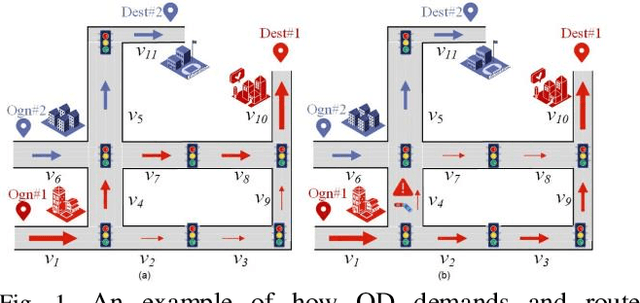
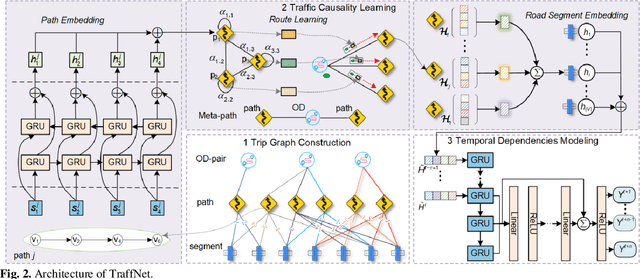
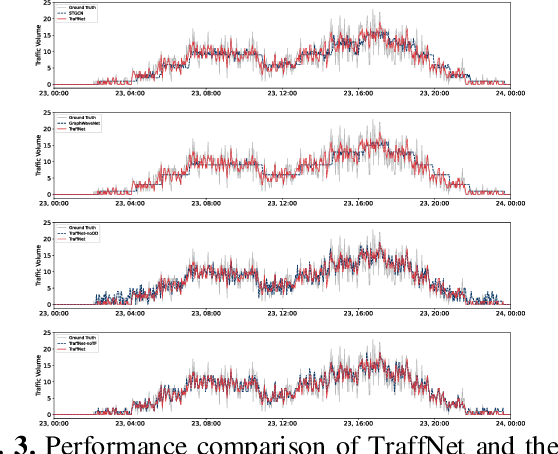
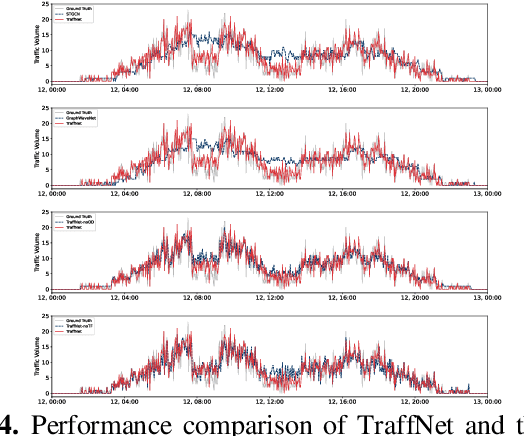
Abstract:Road network digital twins (RNDTs) play a critical role in the development of next-generation intelligent transportation systems, enabling more precise traffic planning and control. To support just-in-time (JIT) decision making, RNDTs require a model that dynamically learns the traffic patterns from online sensor data and generates high-fidelity simulation results. Although current traffic prediction techniques based on graph neural networks have achieved state-of-the-art performance, these techniques only predict future traffic by mining correlations in historical traffic data, disregarding the causes of traffic generation, such as Origin-Destination (OD) demands and route selection. Therefore, their performance is unreliable for JIT decision making. To fill this gap, we introduce a novel deep learning framework called TraffNet that learns the causality of traffic volumes from vehicle trajectory data. First, we use a heterogeneous graph to represent the road network, allowing the model to incorporate causal features of traffic volumes. Next, inspired by the traffic domain knowledge, we propose a traffic causality learning method to learn an embedding vector that encodes OD demands and path-level dependencies for each road segment. Then, we model temporal dependencies to match the underlying process of traffic generation. Finally, the experiments verify the utility of TraffNet. The code of TraffNet is available at https://github.com/mayunyi-1999/TraffNet_code.git.
Discovery of Important Crossroads in Road Network using Massive Taxi Trajectories
Sep 18, 2015
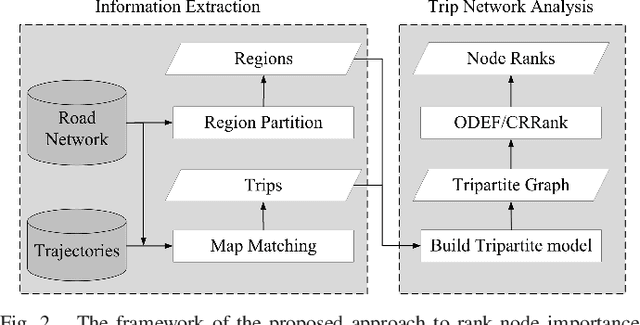
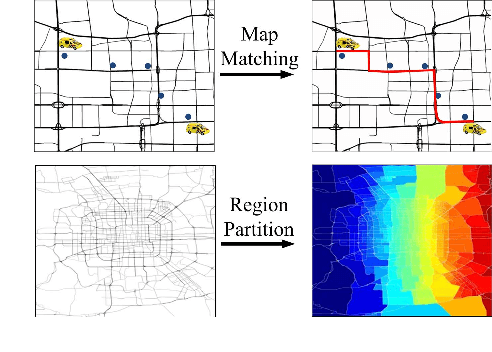
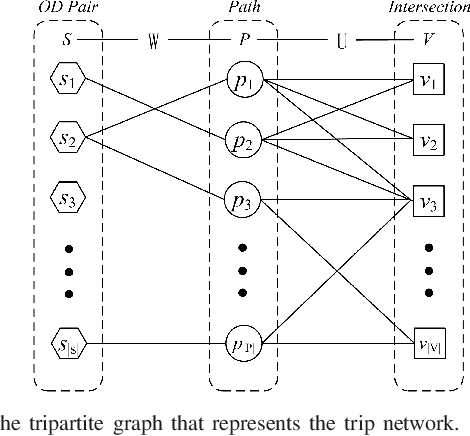
Abstract:A major problem in road network analysis is discovery of important crossroads, which can provide useful information for transport planning. However, none of existing approaches addresses the problem of identifying network-wide important crossroads in real road network. In this paper, we propose a novel data-driven based approach named CRRank to rank important crossroads. Our key innovation is that we model the trip network reflecting real travel demands with a tripartite graph, instead of solely analysis on the topology of road network. To compute the importance scores of crossroads accurately, we propose a HITS-like ranking algorithm, in which a procedure of score propagation on our tripartite graph is performed. We conduct experiments on CRRank using a real-world dataset of taxi trajectories. Experiments verify the utility of CRRank.
 Add to Chrome
Add to Chrome Add to Firefox
Add to Firefox Add to Edge
Add to Edge